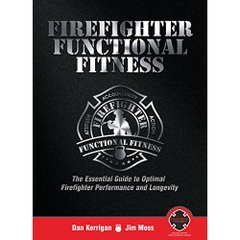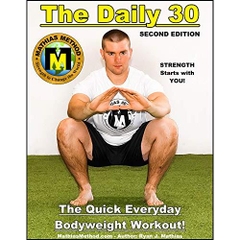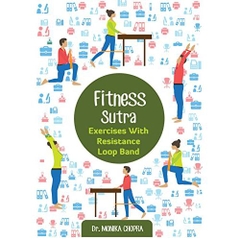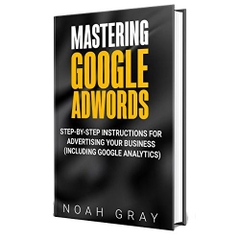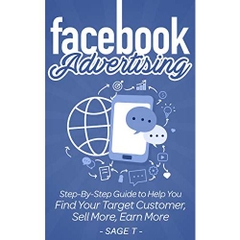-
-
-
Tổng tiền thanh toán:
-
-
Thông tin
-
Tìm sách theo yêu cầu
Book Description
Publication Date: December 17, 2008
Building muscle has never been faster or
easier than with this revolutionary once-a-week
training program
In Body By Science, bodybuilding powerhouse John Little teams up with fitness medicine expert Dr. Doug McGuff to present a scientifically proven formula for maximizing muscle development in just 12 minutes a week. Backed by rigorous research, the authors prescribe a weekly high-intensity program for increasing strength, revving metabolism, and building muscle for a total fitness experience.
Editorial Reviews
About the Author
Doug McGuff, M.D., owns the state-of-the-art personal training facility Ultimate-Exercise. He lectures on exercise science all over the world.
John Little is a columnist for Ironman magazine and the innovator of three revolutionary training protocols, including Max Contraction Training. He and his wife, Teri, own Nautilus North Strength & Fitness Centre and have supervised more than 60,000 workouts.
Learn more at www.bodybyscience.net
Product Details
- File Size: 2017 KB
- Print Length: 313 pages
- Page Numbers Source ISBN: 0071597174
- Simultaneous Device Usage: Up to 4 simultaneous devices, per publisher limits
- Publisher: McGraw-Hill; 1 edition (December 11, 2008)
- Sold by: Amazon Digital Services, Inc.
- Language: English
- ASIN: B001NLL38S
- Text-to-Speech: Enabled

- X-Ray:Enabled

- Lending: Not Enabled
- Amazon Best Sellers Rank: #16,731 Paid in Kindle Store (See Top 100 Paid in Kindle Store)
- #3 in Kindle Store > Kindle eBooks > Nonfiction > Professional & Technical > Medical eBooks > Basic Science > Physiology
- #5 in Books > Health, Fitness & Dieting > Exercise & Fitness > Quick Workouts
- #21 in Kindle Store > Kindle eBooks > Nonfiction > Sports > Training
Most Helpful Customer Reviews
479 of 515 people found the following review helpful
5.0 out of 5 stars A different lifting experience January 29, 2010
By Buba
Format:Paperback
I have been lifting weights for about 2 years on a multiple times per week basis. I have a home gym with both a Vectra machine and bench and free weights. I am a victim of Dr. Kenneth Cooper's aerobic revolution of the 70's and 80's, now with bad knees and bad ankles and chronic tendinitis and 2 herniated disks and spinal arthritis, which is what brought me to weight training in the first place. Over the years I have tried my own program, and I have purchased several programs from the "Guru's" and I pretty much always wound up either injured or I would make progress for a while and then it would seem I would start going backward. My most recent program was the New Rules of Lifting program which I have found to be a very good program. I've done that for a year and have made progress and remained injury free. That program is basically a two or three times per week program and I noticed that I needed the rest between sessions to keep improving. Sometimes I would go down to one session per 5 or 6 days and I found when I lifted next it was easier to make an advance. That couple extra days allowed a more complete recuperation. The exercises in the new rules program are basically the big 5 that is described in the Body by Science program, so over the course of the year I have developed good form with each exercise and a good knowledge of how my body feels during the lift and post lifting.
When I read this program it seemed to fit well with what I had been doing. I was of course skeptical of the 12 minute claim as the New Rules program is a timed set of reps across the exercises of about 45 minutes per session. In the New Rules program if you were anal about the timed aspect you would be forced into an anaerobic state of metabolism which I think is desirable in a workout. You can tell you've gone anaerobic when you quit lifting and ten minutes later your respiratory rate is still elevated. Your body at that point is working off the metabolic acid load it accrued during the anaerobic activity and converting it to CO2 and that extra CO2 load is being expelled by your increased resp rate. I could tell the by the way I felt that was the hormonal changes and increased metabolism associated with micro damage. I decided to give slo mo pumping as described in Body by Science a whirl. What it claims is true. I do 6 exercises bench press, reverse grip pull down, overhead press, seated row, squats and dead lifts, using the time under load method of accounting and trying to maintain 10-15 seconds during reps and it kicks my hind end. I go deep into anaerobic metabolism as I start huffing like a choo choo. I can also tell I am going deep into anaerobic metabolism because I get hot and start to sweat, signs of big sympathetic outflow and my heart starts beating like a trip hammer. I can tell the muscle micro damage and metabolic changes are greater with this slo mo methodology and I find I NEED a week to recover. I could probably compress that to 5 full days but the difference between 5 full days of rest and a week is not enough to push it. I'm still getting into the method trying to keep my form perfect during the time under load.
I am a physician, so I read with interest the physiology described in the book, and what is described in general is correct. I'm not sure I would hang my hat on the "fact" that we grow big muscles so we can run away from tigers, in fact to me that is an unlikely reason. If you have to run away from a tiger once a week in order to build big muscles its unlikely you are going to escape from being dinner. I think it is probably more steeped in a protective adaptation to inflammation response that lifting causes, than running away from tigers. The cardiovascular information is absolutely true in terms of this kind of training being better than the typical "cardio" kind of exercise. Your heart responds to the demand of your muscles. The whole reason you have a heart and lungs is to deliver 2mm of Oxygen tension to the mitochondria in your cells to provide for aerobic metabolism and to wisk away CO2 and metabolic byproducts. When your energy utilization overwhelms your aerobic potential that is when your muscles need more oxygen than your heart and lungs can deliver that is when you get a cardiovascular adaptation. Aerobic exercise by definition NEVER gets you there precisely because it is aerobic. If you ain't huffing like a choo choo (the sure sign of anaerobic metabolism) you may as well be sipping a drink by the pool in my opinion. I also believe every single beneficial claim proposed in terms of anti-hypertension and anti-diabetes improved flexibility and relief from back pain etc etc to be true. I have a pain management practice and I encourage my patients to do weight training to the extent they can, especially those who have managed to escape surgery.
So I think this plan is a worth while plan. I think if you are not well trained in weights you absolutely MUST have someone who truly knows about weight training train you. If you go off half cocked in this kind of program eventually you will hurt yourself. If you have a home gym like I do then I think you should spend 6 months learning how to lift with perfect form using something like the New Rules program before you venture into the Body by Science program. If you have a trainer he can adjust you during an exercise, but if you don't then you need to take a good while getting to know your own body and lifting with not other expectation than developing perfect form until it become second nature. Once you get into lifting it will become a long term part of your life so there is no reason to be in a hurry and not learn to do it right.
I think the exercises proposed are the exact correct exercises. I am a big fan of multi-muscle complex exercises like the dead lift as opposed to doing a billion of hammer curls with a dumbbell trying to increase the size of the third head of the triceps (total waste of time) I have also come to believe based on my experience over the past 2 years you won't see results quickly if you over train. In other words you need the time for the biochemistry to work and to let the damage you are producing heal. If you sprain an ankle (a big injury, not a micro injury) it doesn't get better in 2 days in gets better in 3 to 6 weeks. In other words you need to give your body the real time it takes to heal and that is based on its own physiology, not on some artificial schedule of lifts per week. If you are an old pro at lifting then before each exercise run over in your mind what perfect form means. I like to take 5 seconds to read a card I have prepared that forces me to think about the few things that define perfect form for each exercise. It takes me out of remote control mode and brings my focus back to the task at hand. Finally for this exercise regimen I have a big clock with a second had sitting right in front of each station, and I keep records so I can watch my progress.
As to the diet, I'm less involved. I like the idea of eating non processed food, but I think a ration of about 1:1:1 of fats, carbs and protein on a calorie adjusted basis is probably easier to maintain. I think the problem with processed foods is they tend to really concentrate the calories
When I read this program it seemed to fit well with what I had been doing. I was of course skeptical of the 12 minute claim as the New Rules program is a timed set of reps across the exercises of about 45 minutes per session. In the New Rules program if you were anal about the timed aspect you would be forced into an anaerobic state of metabolism which I think is desirable in a workout. You can tell you've gone anaerobic when you quit lifting and ten minutes later your respiratory rate is still elevated. Your body at that point is working off the metabolic acid load it accrued during the anaerobic activity and converting it to CO2 and that extra CO2 load is being expelled by your increased resp rate. I could tell the by the way I felt that was the hormonal changes and increased metabolism associated with micro damage. I decided to give slo mo pumping as described in Body by Science a whirl. What it claims is true. I do 6 exercises bench press, reverse grip pull down, overhead press, seated row, squats and dead lifts, using the time under load method of accounting and trying to maintain 10-15 seconds during reps and it kicks my hind end. I go deep into anaerobic metabolism as I start huffing like a choo choo. I can also tell I am going deep into anaerobic metabolism because I get hot and start to sweat, signs of big sympathetic outflow and my heart starts beating like a trip hammer. I can tell the muscle micro damage and metabolic changes are greater with this slo mo methodology and I find I NEED a week to recover. I could probably compress that to 5 full days but the difference between 5 full days of rest and a week is not enough to push it. I'm still getting into the method trying to keep my form perfect during the time under load.
I am a physician, so I read with interest the physiology described in the book, and what is described in general is correct. I'm not sure I would hang my hat on the "fact" that we grow big muscles so we can run away from tigers, in fact to me that is an unlikely reason. If you have to run away from a tiger once a week in order to build big muscles its unlikely you are going to escape from being dinner. I think it is probably more steeped in a protective adaptation to inflammation response that lifting causes, than running away from tigers. The cardiovascular information is absolutely true in terms of this kind of training being better than the typical "cardio" kind of exercise. Your heart responds to the demand of your muscles. The whole reason you have a heart and lungs is to deliver 2mm of Oxygen tension to the mitochondria in your cells to provide for aerobic metabolism and to wisk away CO2 and metabolic byproducts. When your energy utilization overwhelms your aerobic potential that is when your muscles need more oxygen than your heart and lungs can deliver that is when you get a cardiovascular adaptation. Aerobic exercise by definition NEVER gets you there precisely because it is aerobic. If you ain't huffing like a choo choo (the sure sign of anaerobic metabolism) you may as well be sipping a drink by the pool in my opinion. I also believe every single beneficial claim proposed in terms of anti-hypertension and anti-diabetes improved flexibility and relief from back pain etc etc to be true. I have a pain management practice and I encourage my patients to do weight training to the extent they can, especially those who have managed to escape surgery.
So I think this plan is a worth while plan. I think if you are not well trained in weights you absolutely MUST have someone who truly knows about weight training train you. If you go off half cocked in this kind of program eventually you will hurt yourself. If you have a home gym like I do then I think you should spend 6 months learning how to lift with perfect form using something like the New Rules program before you venture into the Body by Science program. If you have a trainer he can adjust you during an exercise, but if you don't then you need to take a good while getting to know your own body and lifting with not other expectation than developing perfect form until it become second nature. Once you get into lifting it will become a long term part of your life so there is no reason to be in a hurry and not learn to do it right.
I think the exercises proposed are the exact correct exercises. I am a big fan of multi-muscle complex exercises like the dead lift as opposed to doing a billion of hammer curls with a dumbbell trying to increase the size of the third head of the triceps (total waste of time) I have also come to believe based on my experience over the past 2 years you won't see results quickly if you over train. In other words you need the time for the biochemistry to work and to let the damage you are producing heal. If you sprain an ankle (a big injury, not a micro injury) it doesn't get better in 2 days in gets better in 3 to 6 weeks. In other words you need to give your body the real time it takes to heal and that is based on its own physiology, not on some artificial schedule of lifts per week. If you are an old pro at lifting then before each exercise run over in your mind what perfect form means. I like to take 5 seconds to read a card I have prepared that forces me to think about the few things that define perfect form for each exercise. It takes me out of remote control mode and brings my focus back to the task at hand. Finally for this exercise regimen I have a big clock with a second had sitting right in front of each station, and I keep records so I can watch my progress.
As to the diet, I'm less involved. I like the idea of eating non processed food, but I think a ration of about 1:1:1 of fats, carbs and protein on a calorie adjusted basis is probably easier to maintain. I think the problem with processed foods is they tend to really concentrate the calories
399 of 446 people found the following review helpful
3.0 out of 5 stars Not as "scientific" as it lets on... July 14, 2010
Format:Paperback
OK, this book has some things going for it that help set it apart from other exercise books out there. There are some decent footnotes and the main points all have some scientific backing behind them. It also gets bonus points for pointing out that super levels of fitness, low body fat, and big muscles do not actually equal high levels of health, longevity, and well-being. There is also truth to the author's assertion that there is a quality of life issue involved in the time spent working out when you could be doing other things.
There are a lot of other good points, too, but they are all pretty general and common sense. For example, "The Big Five" (or "Big Three") has been exercise 101 for over a century because of one simple reason: there are really only 5 natural movements that the human body can reasonably perform with weights: Overhead pressing, pulling/pushing down with the lats, pushing out from the chest, pulling into the chest, and standing up to extend the legs. It's also been long understood that the three pillars of weight training are training, diet, and rest: if you're struggling to make gains, you should look at all three instead of just training harder, which can be potentially counterproductive. Again, this should be common sense, but it must be said nonetheless.
However, for a book that's supposed to be so predicated on "science," the science that's presented is often poorly understood or perhaps even deliberately confused to support the author's own selling points and shortcomings of their training system.
Example #1: There is no scientific evidence supporting "Max Contraction," just John Little's marketing. None. The authors' emphasis on doing reps very slowly and counting the time spent under stress are also scientifically dubious with mixed support in the literature.
Example #2: There is no scientific evidence that says old Nautilus machines are conclusively better for fitness than free weights or other manufacturors, but the authors own a gym that specializes in this equipment so it's cited as being the ultimate in training. There is some truth to machine-based workouts being easier on certain joints, and they get bonus points in HIT because they allow you to safely go to failure without a spotter, but the authors barely reference those key points.
Example #3: The studies that are cited are often sort of thrown together. Some will involve elderly or extremely out of shape clients who would have benefited greatly from the introduction of just about any physical activity. The authors point this out when the studies in question apply to aerobic exercise as a reason not to trust those studies, but fail to keep this in mind when studies on similar parameters agree with their own conclusion.
Example #4: If you look up pictures of John Little and most of his clients, you'll mostly find a group of fairly average looking men with very few impressive physical specimens. You'd be hard pressed to tell if some of them work out at all, and I think most people at least want noticable gains from their gym experience. Little asserts time and again that success in sports and bodybuilding is mostly because of genetics and that less than 2.5% of men have the "genetic potential" to build large muscles. However, if you go to just about any gym with a reasonably large clientelle, you'll see several amateur bodybuilders who show that the genetics necessary for this kind of size are not so rare, if in fact they have any "special" genetics at all. Little's "12 minutes a week of max contraction" disciples tend to look absolutely puny by comparison.
That's what I found most disturbing about this book: the misrepresentation of science in the book's emphasis on "genetic potential," particularly the role of genetically determined levels of myostatin as the holy grail, when it comes to building muscle. While myostatin inhibition does help produce large muscles with little bodyfat, the science simply does not say what the authors assert it does. That section is badly written, poorly researched, and misleading.
For examples, the book says that professional bodybuilders refused to be tested for myostatin levels because it may harm their endorsement deals, when in fact many (such as the FREAKISH Ron Coleman, who bags millions in endorsements) were tested for a variety of genetic differences and the results usually came back that they were, in fact, fairly average. Only a couple of examples of genetic irregularities were found and those came from lesser known bodybuilders--most famously, "Flex Wheeler," who has extra muscle fibers. The science just didn't find that bodybuilders are necessarily genetic freaks when looking for the things that it expected to find.
But the myostatin discussion gets worse when discussing myostatin inhibition in racing whippets (and the rare, super muscled freaks known as "bully whippets"), the authors say that "Bully whippets" win most of the races. This is the exact OPPOSITE of reality: Bully whippets are typically euthanized by breeders as puppies because they perform very poorly in races. Their added bulk slows them down and they tend to be injury prone.
That gets to another point the authors overlook: high levels of myostatin inhibition is not associated with greater athletic performance. In fact, myostatin-inhibited mice have been determined, pound for pound, to have weaker muscles than typical mice and much more prone to tendon and joint injuries. Belgian cattle have major problems dealing with stress, are more injury prone, and are also weaker, pound for pound, than typical cattle. It remains to be seen how the handful of positively identified humans with the special genetics that the authors say will make them champion bodybuilders will turn out.
The authors also hint that myostatin inhibiting drugs, their perceived holy grail for supplimentation, were stopped by pharmaceutical companies "for no reason," perhaps even because it may cost them sales of other suppliments, but the truth is that all the drugs that were tested were having potentially lethal effects, such as causing enlargement of the heart. Even then, a couple of myostatin inhibitors were sold as bodybuilding suppliments for a while in the 2000s, but they never caught on because they proved worthless. I don't know if any of them are on the market today.
All of this casts doubts on this book's "scientific" marketing angle. If you follow the authors' advice you may become fitter and happier, as their suggestions will help you achieve and maintain a modest level of fitness, but take the authors' discussion of genetics and unusual training techniques (like "Max Contraction") with a healthy grain of salt.
If you want to get in and maintain a "normal" baseline level of practical fitness with an average body type, you could do a lot worse than to do what this book says. However, if you wish to be a bodybuilder or athlete, you should look elsewhere my friends.
There are a lot of other good points, too, but they are all pretty general and common sense. For example, "The Big Five" (or "Big Three") has been exercise 101 for over a century because of one simple reason: there are really only 5 natural movements that the human body can reasonably perform with weights: Overhead pressing, pulling/pushing down with the lats, pushing out from the chest, pulling into the chest, and standing up to extend the legs. It's also been long understood that the three pillars of weight training are training, diet, and rest: if you're struggling to make gains, you should look at all three instead of just training harder, which can be potentially counterproductive. Again, this should be common sense, but it must be said nonetheless.
However, for a book that's supposed to be so predicated on "science," the science that's presented is often poorly understood or perhaps even deliberately confused to support the author's own selling points and shortcomings of their training system.
Example #1: There is no scientific evidence supporting "Max Contraction," just John Little's marketing. None. The authors' emphasis on doing reps very slowly and counting the time spent under stress are also scientifically dubious with mixed support in the literature.
Example #2: There is no scientific evidence that says old Nautilus machines are conclusively better for fitness than free weights or other manufacturors, but the authors own a gym that specializes in this equipment so it's cited as being the ultimate in training. There is some truth to machine-based workouts being easier on certain joints, and they get bonus points in HIT because they allow you to safely go to failure without a spotter, but the authors barely reference those key points.
Example #3: The studies that are cited are often sort of thrown together. Some will involve elderly or extremely out of shape clients who would have benefited greatly from the introduction of just about any physical activity. The authors point this out when the studies in question apply to aerobic exercise as a reason not to trust those studies, but fail to keep this in mind when studies on similar parameters agree with their own conclusion.
Example #4: If you look up pictures of John Little and most of his clients, you'll mostly find a group of fairly average looking men with very few impressive physical specimens. You'd be hard pressed to tell if some of them work out at all, and I think most people at least want noticable gains from their gym experience. Little asserts time and again that success in sports and bodybuilding is mostly because of genetics and that less than 2.5% of men have the "genetic potential" to build large muscles. However, if you go to just about any gym with a reasonably large clientelle, you'll see several amateur bodybuilders who show that the genetics necessary for this kind of size are not so rare, if in fact they have any "special" genetics at all. Little's "12 minutes a week of max contraction" disciples tend to look absolutely puny by comparison.
That's what I found most disturbing about this book: the misrepresentation of science in the book's emphasis on "genetic potential," particularly the role of genetically determined levels of myostatin as the holy grail, when it comes to building muscle. While myostatin inhibition does help produce large muscles with little bodyfat, the science simply does not say what the authors assert it does. That section is badly written, poorly researched, and misleading.
For examples, the book says that professional bodybuilders refused to be tested for myostatin levels because it may harm their endorsement deals, when in fact many (such as the FREAKISH Ron Coleman, who bags millions in endorsements) were tested for a variety of genetic differences and the results usually came back that they were, in fact, fairly average. Only a couple of examples of genetic irregularities were found and those came from lesser known bodybuilders--most famously, "Flex Wheeler," who has extra muscle fibers. The science just didn't find that bodybuilders are necessarily genetic freaks when looking for the things that it expected to find.
But the myostatin discussion gets worse when discussing myostatin inhibition in racing whippets (and the rare, super muscled freaks known as "bully whippets"), the authors say that "Bully whippets" win most of the races. This is the exact OPPOSITE of reality: Bully whippets are typically euthanized by breeders as puppies because they perform very poorly in races. Their added bulk slows them down and they tend to be injury prone.
That gets to another point the authors overlook: high levels of myostatin inhibition is not associated with greater athletic performance. In fact, myostatin-inhibited mice have been determined, pound for pound, to have weaker muscles than typical mice and much more prone to tendon and joint injuries. Belgian cattle have major problems dealing with stress, are more injury prone, and are also weaker, pound for pound, than typical cattle. It remains to be seen how the handful of positively identified humans with the special genetics that the authors say will make them champion bodybuilders will turn out.
The authors also hint that myostatin inhibiting drugs, their perceived holy grail for supplimentation, were stopped by pharmaceutical companies "for no reason," perhaps even because it may cost them sales of other suppliments, but the truth is that all the drugs that were tested were having potentially lethal effects, such as causing enlargement of the heart. Even then, a couple of myostatin inhibitors were sold as bodybuilding suppliments for a while in the 2000s, but they never caught on because they proved worthless. I don't know if any of them are on the market today.
All of this casts doubts on this book's "scientific" marketing angle. If you follow the authors' advice you may become fitter and happier, as their suggestions will help you achieve and maintain a modest level of fitness, but take the authors' discussion of genetics and unusual training techniques (like "Max Contraction") with a healthy grain of salt.
If you want to get in and maintain a "normal" baseline level of practical fitness with an average body type, you could do a lot worse than to do what this book says. However, if you wish to be a bodybuilder or athlete, you should look elsewhere my friends.
XEM CHI TIẾT TẠI AMAZON.COM
- Thông tin chi tiết
- Mục lục
- Đánh giá & bình luận của người mua
- Những cuốn sách cùng chủ đề hoặc có liên quan
Tại web chỉ có một phần nhỏ các đầu sách đang có nên nếu cần tìm sách gì các bạn có thể liên hệ trực tiếp với Thư viện qua Mail, Zalo, Fanpage nhé
Đăng ký nhận tin qua email
Hãy đăng ký ngay hôm nay để nhận được những tin tức cập nhật mới nhất về sản phẩm và các chương trình giảm giá, khuyến mại của chúng tôi.

